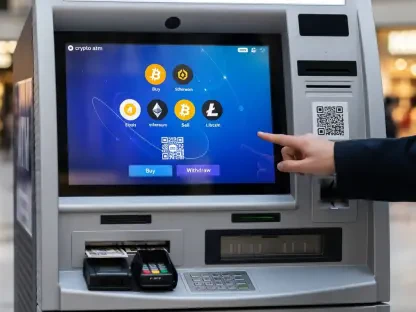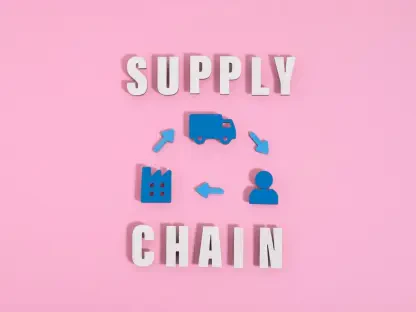In an era where global retail is expanding at an unprecedented pace, cross-border e-commerce is projected to reach a staggering $18.6 trillion by 2033, highlighting a critical challenge for retailers. This explosive growth underscores the pressing need to manage seamless transactions across diverse markets, currencies, and regulations without compromising customer experience. International Point of Sale (POS) systems have emerged as a pivotal technology to address this complexity, enabling businesses to operate efficiently on a global scale. This review delves into the intricacies of these systems, examining their core features, operational mechanisms, real-world impact, and the hurdles they face in shaping the future of commerce.
Core Capabilities of International POS Technology
Cloud-Driven Operations for Global Reach
International POS systems leverage cloud-based technology to provide unparalleled accessibility for businesses operating across borders. By hosting data on remote servers, these platforms ensure that sales, inventory, and customer information are updated in real time, regardless of geographic location. A retailer in Singapore, for instance, can instantly reflect a sale in the system, making the update visible to a warehouse in Germany within seconds.
This capability eliminates the need for costly on-site infrastructure, allowing companies to scale effortlessly as they enter new markets. Whether adding a pop-up store in Brazil or a flagship outlet in Canada, the system adapts without requiring significant hardware investments. Such flexibility positions cloud-driven POS solutions as a cornerstone for businesses aiming to maintain agility in a dynamic global landscape.
Moreover, the ability to access data from any internet-connected device enhances operational oversight. Managers can monitor performance metrics or resolve issues remotely, ensuring consistency in customer service standards across continents. This level of connectivity is transforming how multinational retailers maintain control over sprawling networks.
Multi-Currency Support and Payment Integration
A defining feature of international POS systems is their capacity to handle transactions in multiple currencies while integrating with diverse payment gateways. This functionality ensures that customers can pay in their local currency, reducing friction at checkout and minimizing cart abandonment rates. From accepting euros in Paris to yen in Tokyo, these systems cater to varied consumer preferences seamlessly.
Integration with global payment processors such as Visa, Mastercard, and localized options like Alipay in China or iDEAL in the Netherlands further broadens market reach. Retailers can offer a range of payment methods, accommodating everything from traditional credit cards to digital wallets. This adaptability is crucial for capturing sales in regions with distinct financial ecosystems.
Beyond convenience, multi-currency support helps businesses manage exchange rate fluctuations, preserving profit margins. Automated conversion features embedded in the system provide transparency for both merchant and customer, ensuring trust during transactions. This financial versatility is a key driver for retailers expanding into uncharted territories.
Centralized Management Across Multiple Locations
Managing numerous store locations across different countries poses significant logistical challenges, but international POS systems address this through centralized control. These platforms provide a unified dashboard to oversee sales, inventory, and staff performance across all branches, simplifying complex operations. A chain with outlets in the US and Australia can track real-time data from a single interface.
Inventory tracking stands out as a critical benefit, with features that optimize stock levels and prevent overstocking or shortages. When a product sells out in one region, the system can automatically redirect orders to a nearby warehouse for faster fulfillment. Partnerships with logistics networks further enhance this process, ensuring efficient cross-border shipping.
Such centralized oversight also aids in strategic decision-making. Retailers gain insights into regional sales trends, enabling them to allocate resources effectively. This holistic approach to multi-location management empowers businesses to maintain consistency while adapting to local market demands.
Regulatory Compliance and Data Security
Navigating the maze of international regulations is a daunting task, yet modern POS systems simplify compliance through automated features. These include real-time tax calculations tailored to local jurisdictions and the generation of compliant invoices. Retailers can avoid penalties by ensuring adherence to diverse fiscal policies, such as VAT rules in the European Union.
Security remains paramount, especially when handling sensitive transaction data across borders. End-to-end encryption safeguards information during transmission, while multifactor authentication prevents unauthorized access to the system. These measures are vital for protecting customer trust in markets with stringent data protection laws.
Additionally, multi-language interfaces facilitate compliance by allowing staff and customers to interact in their native languages. A store in Mexico City can operate in Spanish, while corporate reports are generated in English for headquarters in London. This dual focus on security and localization ensures that businesses meet both operational and legal standards globally.
Operational Mechanics of Cross-Border Transactions
Understanding the workflow of international POS transactions reveals the intricate network behind each sale. The process involves multiple stakeholders, including the cardholder, merchant terminal, acquiring bank, card network, and issuing bank, often located in different countries. This cross-border dynamic introduces unique elements like foreign exchange adjustments and additional fees.
The transaction unfolds in distinct stages, beginning with authorization when a customer taps or inserts their card. The request travels through the acquirer and card network to the issuer for approval, followed by optional Dynamic Currency Conversion (DCC) prompts in certain regions. Clearing and settlement finalize the process, with funds transferred after deducting applicable fees, often within a day or two.
Fees associated with these transactions can be multifaceted, encompassing interchange costs, network assessments, and currency conversion charges. Regulatory variations, such as differing fee caps in the EU compared to post-Brexit UK, further complicate cost structures. Transparency in these expenses remains a critical area for improvement, as merchants often grapple with understanding the full financial impact.
Practical Impact in Retail and Ecommerce
International POS systems have found widespread application in retail and e-commerce, enabling businesses to bridge online and offline sales channels. Global chains utilize these platforms to manage transactions in multiple currencies while offering consistent customer experiences, whether in a physical store in Dubai or an online portal accessed from Seoul.
Innovative use cases highlight their versatility, such as facilitating buy-online-pick-up-in-store services. A customer in Italy can order a product online and collect it from a local outlet, with the POS system synchronizing inventory and payment details seamlessly. This integration enhances convenience and drives foot traffic to brick-and-mortar locations.
Additionally, tools designed for cross-border operations simplify expansion into new markets. Features like automated customs documentation and upfront duty collection reduce logistical hurdles, allowing retailers to focus on growth rather than administrative burdens. These practical applications demonstrate the tangible value of POS technology in a globalized economy.
Obstacles in Adoption and Implementation
Despite their advantages, international POS systems face significant barriers to widespread adoption. High transaction fees, compounded by complex structures for cross-border payments, often deter smaller retailers from embracing these solutions. Variations in regional regulations further exacerbate cost unpredictability, creating financial uncertainty.
Regulatory disparities across markets pose another challenge, as businesses must navigate conflicting rules on data handling and payment processing. Ensuring compliance with multinational data protection laws requires robust cybersecurity measures, adding to operational complexity. Retailers must invest in systems that can adapt to these evolving legal landscapes.
Efforts to address these issues are underway, with providers working to streamline fee models and enhance user interfaces for better accessibility. Improved integration with existing business tools also aims to reduce setup challenges. However, overcoming these obstacles remains a work in progress, requiring ongoing innovation from technology developers.
Emerging Trends and Innovations
Looking ahead, international POS systems are poised for transformative advancements that will further solidify their role in global commerce. The continued shift toward cloud-based platforms is expected to accelerate, offering even greater scalability and real-time data synchronization. This trend will likely redefine operational efficiency for retailers over the next few years.
Artificial intelligence is set to play a larger role, enabling personalized customer interactions through data-driven insights. Automated compliance processes, particularly for tax and regulatory adherence, are also on the horizon, promising to reduce administrative burdens. These innovations could unlock new levels of precision in managing international transactions.
As cross-border transaction volumes soar—potentially reaching unprecedented figures in the coming decade—these systems will become indispensable. Their ability to adapt to emerging technologies and market demands will determine their long-term impact. Retailers must stay attuned to these developments to leverage the full potential of POS solutions.
Final Reflections on Global POS Advancements
Reflecting on this evaluation, international POS systems have proven to be a game-changer for retailers navigating the complexities of global markets. Their strengths in scalability, multi-currency handling, and centralized management stand out as critical enablers of cross-border success. Challenges like fee transparency and regulatory navigation, however, highlight areas where refinement is essential.
Moving forward, businesses should prioritize selecting POS solutions that offer robust integration capabilities and responsive customer support to address diverse operational needs. Exploring partnerships with logistics providers can further streamline inventory and shipping processes. Staying proactive in adopting emerging features, such as AI-driven personalization, will be key to maintaining a competitive edge in an ever-evolving retail landscape.









